This elegant inlaid wood commode, representative of the Neoclassical style, was crafted in Piedmont, Italy, toward the end of the 18th century. Stylistically, it can be attributed to the workshop of two well-known cabinetmakers from Piedmont: Ignazio Ravelli (1756–1836) and his son Luigi (1776–1858), active in Vercelli from the second half of the 18th century through the early 19th century. Shaped as a demi-lune, it features a Grigio Bardiglio marble top. The structure of the commode — the uprights, drawer dividers, legs, and drawer interiors — is made of solid walnut, while the drawer fronts and sides are veneered and inlaid in walnut and boxwood. The front comprises three drawers: the upper and lower drawers, smaller in size, are decorated with inlays forming fine frames and a delicate beaded garland that connects to circular gilt metal applications. The escutcheons are also circular and made of chiseled and gilded bronze. The central drawer, taller and divided internally into three compartments, is veneered with a pattern that cleverly uses the wood grain to create a decorative chevron design, adding visual movement. At its center, set within an inlaid geometric frame, is a marquetry scene depicting a seaside landscape with boats, houses, and a rocky coast made from various burl woods. Ignazio Ravelli often favored inlays with imaginative architectural views — capriccios of ruins and landscapes — inspired by the engravings of Giambattista Piranesi, Ferdinando Galli Bibiena, and Vincenzo Mazzi. The sides of the demi-lune, also veneered and inlaid, echo the decorative scheme of the front, with upper and lower panels adorned with beaded garlands and a central circular floral motif. Each side includes a single door with a rear hinge, concealing a shelved compartment. The lock escutcheons are in chiseled and gilded bronze. All locks are original. This refined chest of drawers is highly decorative, thanks to the use of woods in varying tones, creating an elegant and pleasing chromatic interplay through the inlay work. Its demi-lune shape makes it light and versatile, easy to place in various settings. It can be featured in a study, living room, or bedroom, but also fits well in an entrance or hallway, complementing both antique and modern furnishings.






























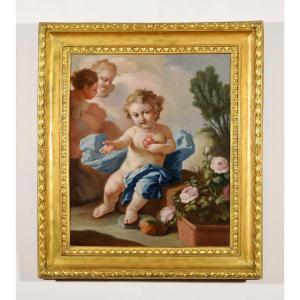



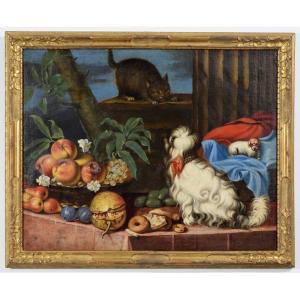


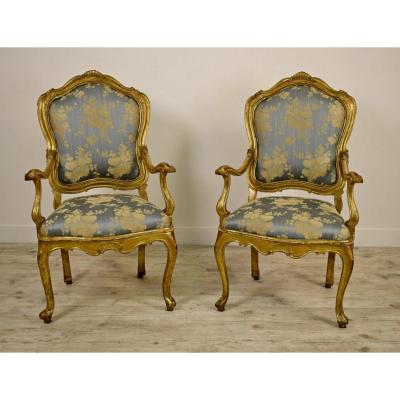




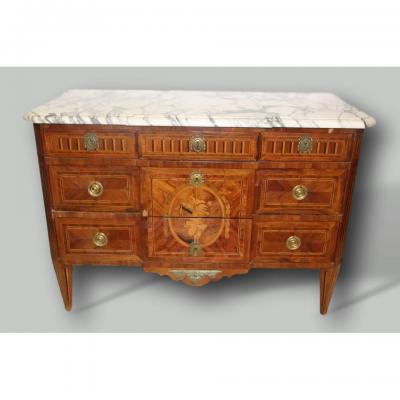
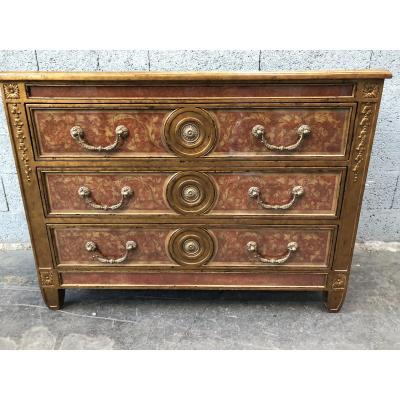
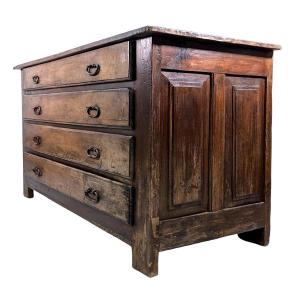
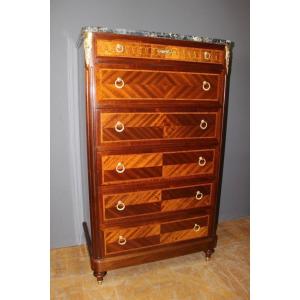
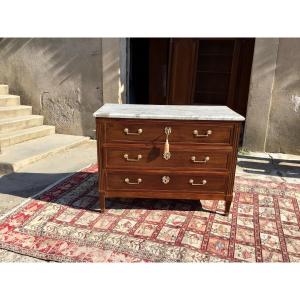



 Le Magazine de PROANTIC
Le Magazine de PROANTIC TRÉSORS Magazine
TRÉSORS Magazine Rivista Artiquariato
Rivista Artiquariato